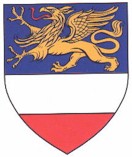Rostock
|
|
| Coat of Arms | Map of Germany |
|---|---|

| Missing image Rostock_in_Germany.png Map of Rostock in Germany |
| Data | |
| State | Mecklenburg-Western Pomerania |
| County | no county; free city |
| Area | 180.99 km² |
| Population | 198,000 (2003) |
| Population Density: | 1094.33 people per km² |
| Altitude: | 13 m above sea level |
| Postal Code | 18001-18147 |
| Telephone Code | +49.381 |
| Location | Template:Coor dm |
| Car Code | HRO |
| City Council | Neuer Markt 1 18055 Rostock |
| Homepage | www.rostock.de |
| info@rostock.de (mailto:info@rostock.de) | |
| Administration | |
| Mayor: | Roland Methling |
Rostock (Slavic origin: roztoka, Polish: Roztoka) is a city in northern Germany. It is the largest city in the State of Mecklenburg-Western Pomerania. Rostock is located on the Warnow river; the quarter of Warnemünde 12 km north of the city centre lies directly on the coast of the Baltic Sea.
| Contents |
Transport
Rostock can be reached by Motorway (Autobahn) BAB 20 from Hamburg and by BAB 19 from Berlin. There are connecting flights via Munich to Rostock Laage Airport.
Historical notes
In the 11th century there was a Slavic settlement at the Warnow river called Roztoc (which means broadening of a river); the name Rostock is derived from that designation. The Danish king Valdemar I set the town aflame in 1161. Afterwards the place was settled by German traders. At the beginning there were three separate cities, the Altstadt (Old Town) around the Alter Markt (Old Market) with St. Petri (St. Peter's Church), the Mittelstadt (Middle Town) around the Neuer Markt (New Market) with St. Marien (St. Mary's Church) and the Neustadt (New Town) around the Hopfenmarkt (Hops Market, now Universitätsplatz) with St. Jakobi (St. James's Church, now demolished).
The rise of the city began with its membership in the Hanseatic League. In the 14th century it was a powerful seaport town with 12,000 inhabitants and the biggest city of Mecklenburg. Ships for cruising the Baltic Sea were constructed in Rostock. In 1419 the oldest university in Northern Europe, the University of Rostock, was founded.
At the end of the 15th century the dukes of Mecklenburg succeeded in enforcing their rule over the town of Rostock, which had until then been only nominally subjugate to their rule and essentially independent. They took advantage of a riot known as Domfehde, a failed uprising of the impoverished population. Subsequent quarrels with the dukes and persistent plundering led ultimately to a loss of economic and political power.
In the first half of the 19th century Rostock regained much of its economic importance, at first due to the wheat trade, and, from the 1850s, to industry, especially to its shipyards. The first propeller-driven steamers in Germany were constructed there. The city grew in size and population, with new quarters emerging in the south and west of the ancient borders of the city. These were establisned around 1900:
1. the Steintor-Vorstadt in the south, stretching from the old city wall to the facilities of the new Lloydbahnhof Railway Station (now Hauptbahnhof). It was designed as a living quarter and consists mostly of large single houses, once inhabited by wealthy citizens.
2. the Kröpeliner-Tor-Vorstadt in the west, designed to house the working population as well as smaller and larger industrial facilities such as Mahn & Ohlerich's Brewery (now Hanseatische Brauerei Rostock). The main shipyard, Neptun was just nearby at the shore of the river.
In the 20th century, important airplane manufacturing facilities were situated in the city, such as the Arado Works in Warnemünde and the Heinkel Works with facilities at various places. It was at their facilities in Marienehe where the world's first jet plane made its test flights. Airplane construction ceased at the end of the Second World War.
Large parts of the central city were destroyed in World War II by Allied bombings in 1942 and 1945. Through reconstruction and subsequent extension, the city became a major industrial centre of East Germany with the port being developed as the primary gate to the world. In 1989, it had almost 260,000 inhabitants.
Following the reunification of Germany after 1989, Rostock lost its privleged position as the principal seaport of East Germany and became just another medium-sized city, now located in one of the poorest regions of reunited Germany. Because of this, and despite large infrastructure investments, the city's economy has declined. More importantly, its population dropped from 253,000 in 1988 to less than 200,000 today, primarily due to emigration to more prosperous western regions of Germany but also to suburbanisation.
Sights
- University Square Universitätsplatz with the fountain of zest for live (Brunnen der Lebensfreude)
- pedestrian precinct Kröpeliner Straße
- St Mary (Marienkirche) 13th century, with an astronomical clock from 1472
- St Nikolai (Nikolaikirche), 13th century
- Town Hall (oldest parts 1290)
- Medieval city wall with four remaining town gates
- premier league (Bundesliga) soccer club FC Hansa Rostock
See also
External links
- City of Rostock (http://www.rostock.de)
- University of Rostock (anno 1419) (http://www.uni-rostock.de)
- German "Bundesliga" soccer club Hansa Rostock (http://www.fc-hansa.de)
- Evangelical Lutheran Church of Mecklenburg (http://www.kirche-mv.de)
- Official Hompage (http://www.plattfoeoet.de) - De Plattfööt
de:Rostock es:Rostock eo:Rostock la:Rostock nl:Rostock nds:Rostock pl:Rostock sv:Rostock it:Rostock
